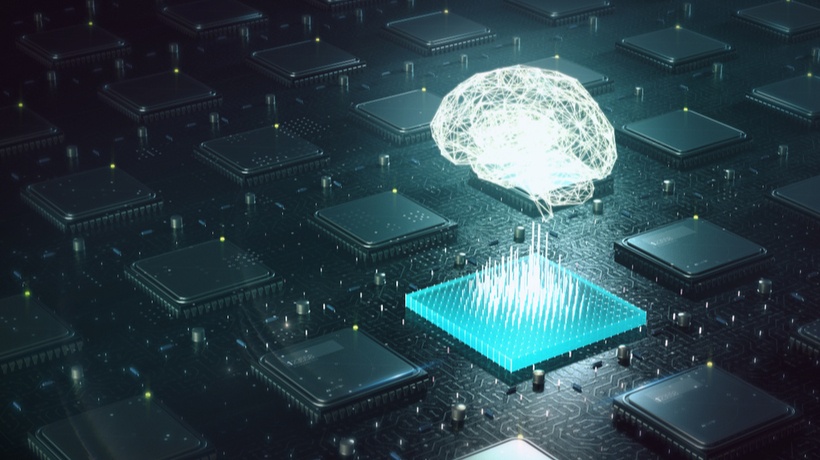Deep Learning: All You Need To Know
Companies today have to deal with changing business landscapes, diligent employees, and a tsunami of data. The big question now is if and what they are doing to encourage Deep Learning for all the stakeholders involved including employees, customers, and the company itself. After all, Deep Learning is something that we cannot turn a blind eye to. Companies should care about it now more than ever because it is increasingly becoming a critical, competitive weapon that has the potential to propel the business to success.
Wikipedia defines 'Deep Learning' as a subset of Machine Learning in Artificial Intelligence (AI) that has networks capable of learning unsupervised from unstructured or unlabeled data. In an easier to understand way, Deep Learning leverages the machine's intelligence (as opposed to the human's) to comprehend and extract relevant information from Big Data. This is done through a self-adaptive algorithm that gets better and better analysis and patterns with experience or with newly added data.
That's Deep Learning from the AI perspective. What about the basic premise behind this sub-set of Machine Learning? The real concept in its literal sense? It is this unexplored bit about Deep Learning that we shall discuss in this article.
How Can Deep Learning Be Achieved?
Deep Learning is a continuous process and has to be leveraged in a way that benefits the right people at the right time. One way to do this is through a tech-enabled learning platform or a learning ecosystem.
Many smart organizations are sticking to traditional LMS-based learning while also seeking ways to capture informal learning and encouraging a culture of knowledge sharing. The resulting integrated ecosystem that has the right mix of formal and informal learning can make a decisive contribution in creating a meaningful impact on the company and its culture.
In the context of employees, who are the biggest asset of a company, such a blended system that encourages a 360-degree approach to learning can go a long way in tapping and developing the right potential among them. This system is also beneficial in terms of in-house talent management, especially at a time when finding the right external talent is challenging. Most companies have an ample number of employees with great tacit and explicit knowledge, who can be a perfect fit for the new role(s) that the company has been struggling to fill merely by empowering them to document their experiences, learning, and knowledge in repositories (part of informal learning). Most importantly, such a learning ecosystem leads to the creation of strong knowledge databases within the organization that encourage performance support, offer learning tools, content, and expert help, as and when needed and demanded by employees or even customers. Additionally, these can act as the company’s own knowledge bank/ safe vault that helps mitigate the risk in case of exit of its key employees.
However, it's not just informal learning that's key to the success of Deep Learning. With 'mobile' and 'mobility' being the buzzwords and a way of living today, mobile learning—either in the form of Performance Support Tools (PSTs), Knowledge Reinforcement Tools (KRTs), or On/Off Sync Apps with offline learning support—is critical for enabling the anywhere, anytime, and any device component of Deep Learning.
To a great extent, Deep Learning can also be achieved through an LMS with support for competency management, which through a mapping of roles to skills, identifies skill-gaps and suggests/ assigns relevant training content to learners.
But for the most part, the success of Deep Learning and the learning ecosystem does not depend only upon the technologies that go behind it. It also depends on the entire learning architecture that supports the technologies. A strong learning architecture offers guidelines for the technologies while identifying key indicators of learning within the ecosystem so that the learning data, drawn from the different technologies, can be analyzed according to important learning and performance indicators.
Have Companies Embraced Deep Learning?
Despite the fact that such a technology-enabled learning ecosystem has so much potential to meet the (deep) learning goals, there are very few organizations that have actually espoused the idea. Mainly because most are still focussed only on formal learning, due to the belief that this kind of 'quantifiable' learning leads to more tangible results that can be tracked for ROI measurement. However, the problem is that, by doing so, these organizations are simply confining and limiting the reach of their learning programs. They are not allowing it to flow freely 'deep' enough, therefore restricting the dissemination and re-use of this precious asset.
Another issue is that L&D professionals are still too busy measuring learning in terms of the number of times a learner logs in to an LMS or spends time taking a formal course for gaining knowledge. Most are unable to adapt to the more meaningful indicators of technology-enabled learning. For now, it looks like it may take them a little while to accept and identify significant learning indicators, where multiple technologies are involved.
Nevertheless, in this day and age where the workforce is becoming increasingly mobile, organizations need to step up their game and find ways to capture and conserve their valuable knowledge. Organizations that have accepted the power of Deep Learning through technology-enabled learning ecosystems will be in a better position to address the challenges of today and tomorrow. For others, it is time to check how ‘deep’ their learning really is!









